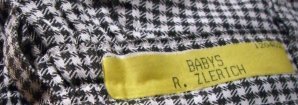John Francis and the QR Algorithm
My friend Flip used to get a kick out of his electrical engineering textbooks because they'd include biographies of major engineering contributors who died obscurely and in poverty. Flip speculated those biographies were intended to be motivational in nature.
Our numerical linear algebra class covered the QR algorithm. In class, our professor mentioned its place as one of the most important algorithms ever. Later, he passed along an interesting note. One of the biggest contributors to the algorithm had never heard just how important it was...
Date: Sun, 19 Aug 2007 13:54:47 -0700 (PDT) Subject: John Francis, Co-Inventor of QR Dear Colleagues, For many years, I have been interested in meeting J G F Francis, one of the co-inventors of the QR algorithm for computing eigenvalues of general matrices. Through a lead provided by the late Erin Brent and with the aid of Google, I finally made contact with him. John Francis was born in 1934 in London and currently lives in Hove, near Brighton. His residence is about a quarter mile from the sea; he is a widower. In 1954, he worked at the National Research Development Corp (NRDC) and attended some lectures given by Christopher Strachey. In 1955,'56 he was a student at Cambridge but did not complete a degree. He then went back to NRDC as an assistant to Strachey where he got involved in flutter computations and this led to his work on QR. After leaving NRDC in 1961, he worked at the Ferranti Corp and then at the University of Sussex. Subsequently, he had positions with various industrial organizations and consultancies. He is now retired. His interests were quite general and included Artificial Intelligence, computer languages, systems engineering. He has not returned to numerical computation. He was surprised to learn there are many references to his work and that the QR method is considered one of the ten most important algorithms of the 20th century. He was unaware of such developments as TeX and Math Lab. Currently he is working on a degree at the Open University. John Francis did remarkable work and we are all in his debt. Along with the conjugate gradient method, it provided us with one of the basic tools of numerical analysis. Gene Golub

1 comment:
Keep up the good work.
Post a Comment